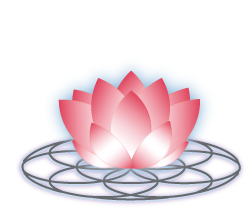In the world of wellness, the liver is the body’s natural detox powerhouse. It filters toxins, processes nutrients, breaks down hormones, and manages blood sugar - making it essential for our overall health and vitality. However, when the liver becomes congested due to any stress, impact or trauma, its detox function can be impaired - even if you are eating clean and healthy. This is where manual osteopathic therapy steps in. MOT is a holistic manual therapy that focuses on restoring the body’s natural balance through gentle manipulation of muscles, joints, fascia, and organs. When it comes to supporting the liver, MOT offers a unique approach that goes beyond diet and supplements - by physically enhancing the environment in which the liver operates.
Osteopathic support for the liver is often part of a broader, whole-body strategy - looking at the musculoskeletal, circulatory, nervous, and visceral systems in tandem.
One of the key and direct osteopathic techniques for liver health is visceral manipulation - gentle hands-on work that helps the liver and its surrounding organs move freely. Every organ in the body has its own natural rhythm in how its moves and interacts with each other. And any restriction in its movements can lead to congestion and poor drainage. By encouraging normal mobility, osteopathic therapy can help reduce the amount of pressure on the liver, thus enhancing its ability to process and eliminate toxins more effectively.
Improving circulation and lymphatic flow are crucial for liver detox. If circulation is impaired, the liver can struggle to receive fresh oxygenated blood or remove waste products efficiently. As one of the foundational techniques of MOT, it can stimulate the lymphatic system to support toxin elimination and optimize lymphatic flow, clearing the pathways so that the liver can do its job without being clogged up.
The liver’s function is also deeply influenced by the autonomic nervous system - especially the parasympathetic side. Chronic stress or trauma can lead to sympathetic dominance, which disrupts digestion, liver enzyme production, and detox pathways. By using osteopathic craniosacral techniques to regulate the nervous system, it can calm down the stress response and improve vagus nerve function. Shifting the body into a state more conducive to healing and detoxification.
The liver is anatomically connected to the diaphragm, ribs, spine, and other digestive organs. Poor posture or “tweaks” in the skeletal system can restrict liver function mechanically. By restoring structural integrity with osteo-articulation, such as rib mobilization and correction of the spinal restrictions, the liver gets the physical space and support it needs to function optimally.
The liver works hard behind the scenes to keep you healthy, while MOT offers a gentle, effective, and natural way to support this vital organ, not just by targeting symptoms, but by treating the root causes of dysfunction. Whether you are on a detox journey or simply aiming to optimize your wellbeing, incorporating osteopathic treatments can be a powerful step toward balance, vitality, and better health.
~ Derek Chiu, MOT, RMT



